Museums, Theaters, Architecture, Miami
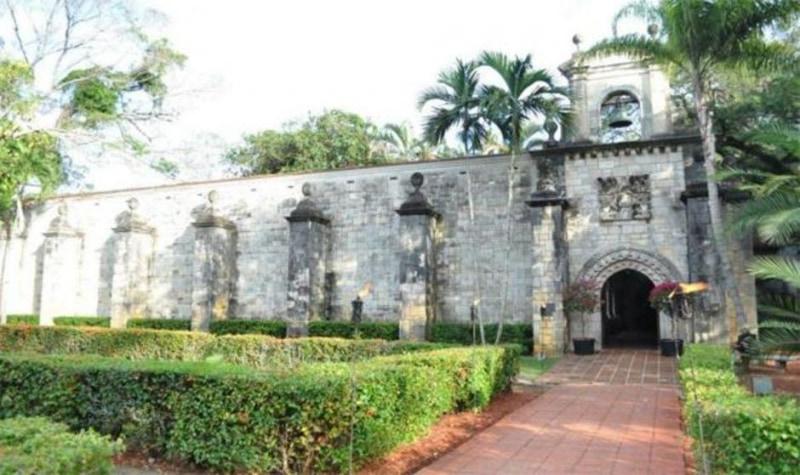
Removed from Unnamed collection
Ancient Spanish Monastery 
Hidden in modern North Miami Beach, the Ancient Spanish Monastery takes us back. An enclave of European architecture and history, this Florida Heritage site—which was originally built in Sacramenia, a municipality of Segovia in northern Spain—has endured a long and interesting history to become the South Florida monument we know and love today.
“The Ancient Spanish Monastery is a little piece of Spanish history,” says Father Gregory Mansfield, Curator of the Ancient Spanish Monastery Museum & Gardens. “Construction began in 1133 AD, almost 360 years before Columbus left Spain and arrived in the Americas, and it took eight years to complete. There are over 35,000 stones, some of which weigh a ton and a half.”
In the 21st century, the Ancient Spanish Monastery serves as both a peek into history and a tourist attraction. At the entrance to the property, there’s a museum with historic Spanish artifacts like a hymnarium and pieces of armor worn during the Crusades. In that same building, there is also a gift shop with souvenirs available for purchase. http://www.miamiandbeaches.com/attraction/ancient-spanish-monastery/100839
Map
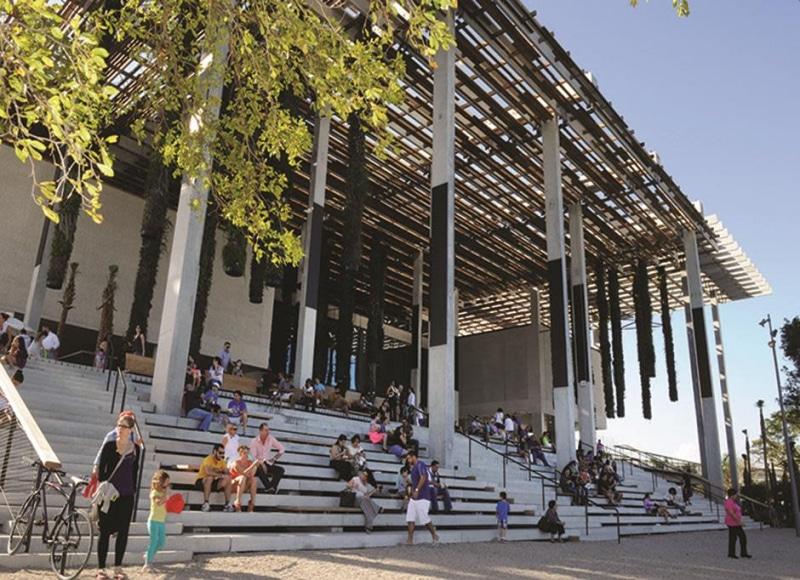
Removed from Unnamed collection
Perez Art Museum Miami 
Perhaps the most important museum in Miami, PAMM opened its doors in December 2013 just in time for Art Basel. Dedicated to international art of the 20th and 21st centuries from the perspective of the Americas, the bayfront museum boasts an impressive permanent collection, as well as compelling exhibitions. The landmark building by Pritzker Prize-winning architects Herzog & de Meuron further solidified Miami’s place as a major city of the arts. http://www.miamiandbeaches.com/arts/perez-art-museum-miami/100797
Map
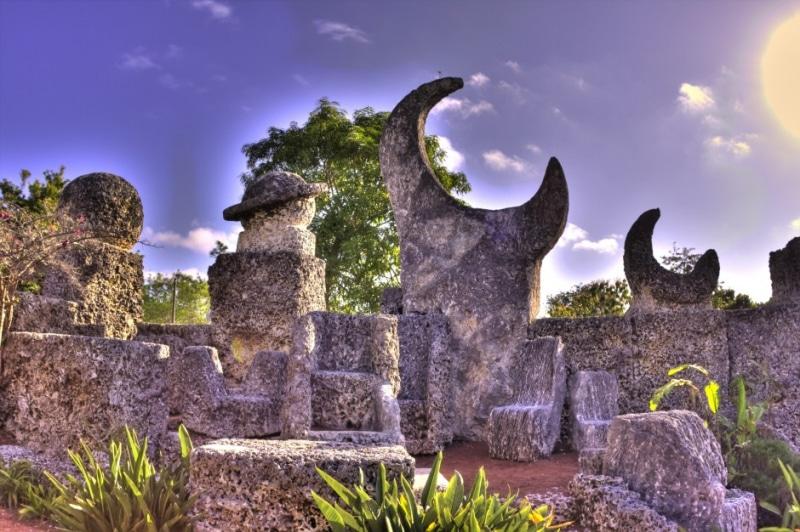
Removed from Unnamed collection
Coral Castle Museum 
A modern day world marvel, it’s worth the journey down south to the Coral Castle Museum in Homestead. As a tribute to his long lost love, a tiny Latvian immigrant who only weighed 100 pounds, moved and sculpted more than 1,000 tons of coral rock for nearly 30 years, until the project was completed in 1951. The feat has baffled scientists and engineered for years.
Since 1923 Scientists, Engineers, Scholars continue to be amazed! See a hand-carved 9-ton gate, a Polaris telescope, the world’s only Sundial with seasons. Enjoy a movie short about the mysteries of Coral Castle, its creator; Edward Leedskalnin. Relax at the Coral Castle Café and enjoy the delicious gourmet menu. Visit the unique gift shop with Coral Castle collectables, science, natural stones, jewelry and much more! http://www.miamiandbeaches.com/attraction/coral-castle-museum/102397
Map
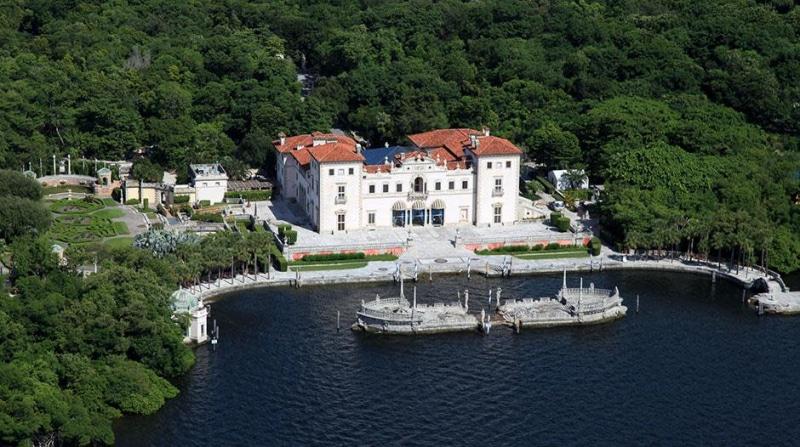
Removed from Unnamed collection
Vizcaya Museum & Gardens 
Just across Biscayne Bay, Coconut Grove is home to the gorgeous Vizcaya Museum & Gardens, a National Historic Landmark that was once the winter home of agricultural industrialist, James Deering. Nestled on 10 acres of shoreline and located directly on the water, the mansion has been beautifully restored to its Gilded Age heritage. European antiques and art adorn the main house and lush tropical gardens surround the property. http://www.miamiandbeaches.com/arts/vizcaya-museum-and-gardens/100789
Map

Removed from Unnamed collection
The Wolfsonian-FIU 
Located in the heart of South Beach’s Art Deco District, The Wolfsonian-FIU is a museum, as well as a library and research center that examines “the persuasive power of art and design and explores what it means to be modern.” Their collection of 120,000 objects, dating from 1885 to 1945, focuses on American and European decorative and fine arts, in addition to fascinating exhibitions. From propaganda posters to World's Fair memorabilia, the array of objects offers visitors a thought-provoking journey through the modern age. http://www.miamiandbeaches.com/arts/the-wolfsonian-fiu/100802
Map
Explore more places related to this search:
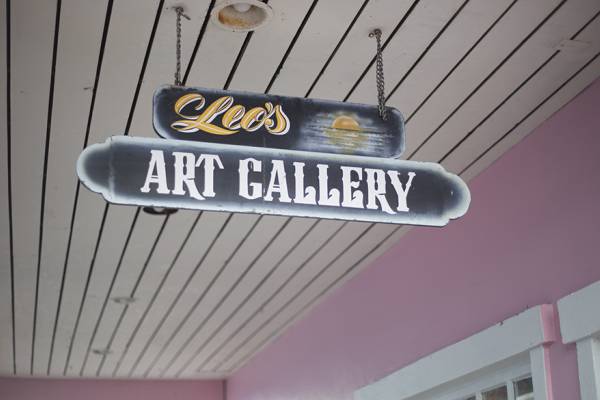
Removed from Unnamed collection
Leos Art Gallery 
Vivid original paintings cover the walls of this small gallery. Leo, owner/artist and Nassau native, uses the space as a studio as well as a showroom, which somehow makes it more inviting. Leo has been painting since a very young age, and was officially discovered when the late GBPA Chairman, Mr. Edward St. George, saw his work and immediately offered him a scholarship to the school of his choice. Leo's paintings themselves depict exotic wildlife and religious scenes. As the artist is happy to explain, nearly every element of every painting is deeply symbolic, but even at first glance, the pictures are striking, colorful and complex. https://www.bahamas.com/vendor/leos-art-gallery
Map

Removed from Unnamed collection
Garden of the Groves 
Garden of the Groves is Grand Bahama’s premier nature experience! Explore winding trails through lush vegetation, cascading waterfalls and sparkling fountains.
Visit the picturesque chapel, which has been consecrated and is a favourite place for weddings, prayer and meditation.
Explore the Garden Shops, discover the sacred beauty of the Labyrinth, enjoy lunch or dinner at the Garden Café and Bar, or children can play at the newly expanded playground.
At Garden of the Groves indigenous and migratory birds and butterflies sip nectar or take insects from the many flowers and shrubs that were newly planted to provide nectar, insects and berries for wildlife. http://www.thegardenofthegroves.com/
Map

Removed from Unnamed collection
Heritage Museum of the Bahamas 
The Heritage Museum of The Bahamas opened in July 2014 and is the foundation of Graycliff new Heritage Village. Located in the historically preserved Mountbatten House opposite the Graycliff Hotel on West Hill Street, the museum offers visitors an in depth look at the history and heritage of The Bahamas, ranging from the prehistoric times to the present.
Browse the collection of Hamilton White, a well-known British antiques collector, his expansive collection greatly complements the history of West Hill Street with fossils, relics and treasures spanning the centuries. The oldest of artefacts being a slice of a meteorite, which is approximately 4.5 billion years old! The timeline explores natural history, the days of Columbus, the piracy era, slavery and plantation life, the Maritimes of the 18th century, life in the Out Islands during the early 1900’s, the days of the Duke of Windsor, the Royal Air Force, Bahamas Speed Weeks, and so much more. http://www.graycliff.com/heritage-village-at-graycliff/
Map
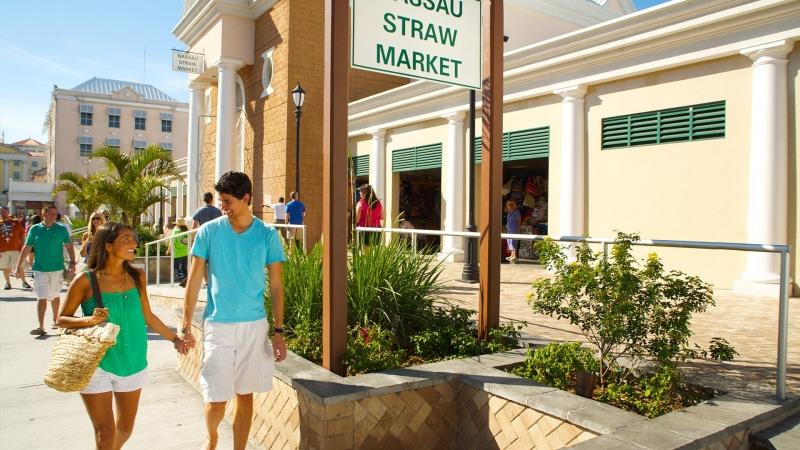
Removed from Unnamed collection
Straw Market 
Right in the middle of the high-end and boutique shops on Nassau’s Bay Street you’ll find the world-famous Straw Market. It’s home to handmade Bahamian crafts, gifts, souvenirs, and items such as hand-woven straw hats, bags, mats, dolls, conch shell jewelry, and wood carvings—and all available at very reasonable prices, especially if you’re good at negotiating!
Located on Bay Street in downtown Nassau, The Nassau Straw Market is an authentic representation of an industry that has been growing throughout The Bahamas and the Caribbean since the early 1940′s. Originally, the craft and skills of plaiting, braiding, and weaving were useful when Bahamians led subsistence lifestyles, with baskets being used for carrying fruit and fishing traps. But following the end of World War II, many North Americans began visiting The Bahamas for their vacations, and straw craft souvenirs soon grew in popularity. https://www.nassauparadiseisland.com/things-to-do/shopping/straw-market
Map

Removed from Unnamed collection
Bahama Crafts Centre 
Downtown Nassau isn’t the only place known for a fabulous straw market! Conveniently located across the street from Marina Village on Paradise Island is The Bahamas Craft Centre. It features Bahamian handicrafts, conch shell jewelry, Junkanoo art, wooden carvings, clothing, straw work, souvenirs, and more. It’s also a place where you can both test your bargaining skills and watch local artisans work their magic.
Located across the street from Marina Village and next to Anthony’s Grill and Dunkin’ Donuts, The Bahamas Craft Centre is quite recognizable, because even from the outside it has a style all its own. Noted architect Jackson Burnside of Doongalik Studios designed the large Art Deco building that is painted in many shades of pastel yellows, oranges, and pinks. Overall it has a more quiet and sedate atmosphere than its larger cousin on Bay Street in Nassau.
The Bahamas Craft Centre features approximately 100 booths selling everything from clothing to woven straw goods and everything in between. You’ll find Bahamian handicrafts, paintings, sea treasures, blown glass, conch shell jewelry, rum cakes and candies, Junkanoo art, steel drums, candles, driftwood paintings, straw work, and pine seed dolls, as well as Androsia, a unique Bahamian fabric. https://www.nassauparadiseisland.com/things-to-do/shopping/bahama-crafts-centre
Map
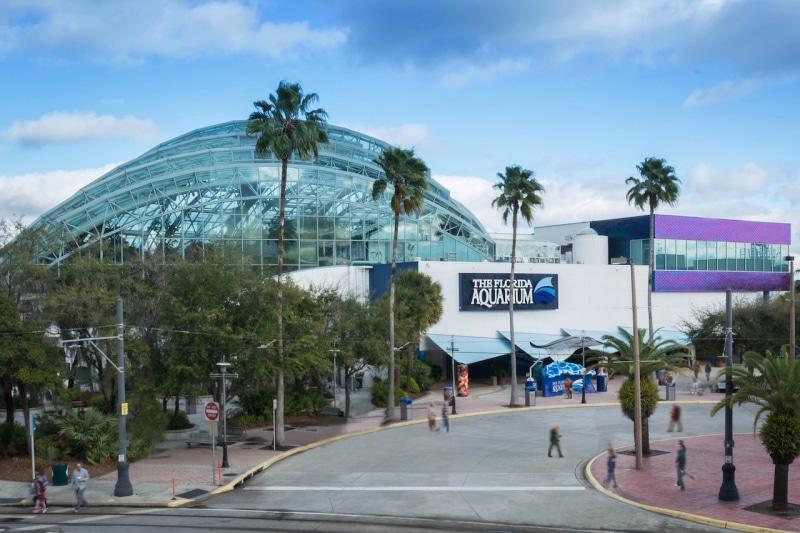
Removed from Unnamed collection
The Florida Aquarium 
The Florida Aquarium is a 501(c)(3) not-for-profit organization whose mission is to entertain, educate and inspire stewardship of the natural environment. https://www.flaquarium.org/who-we-are
Map
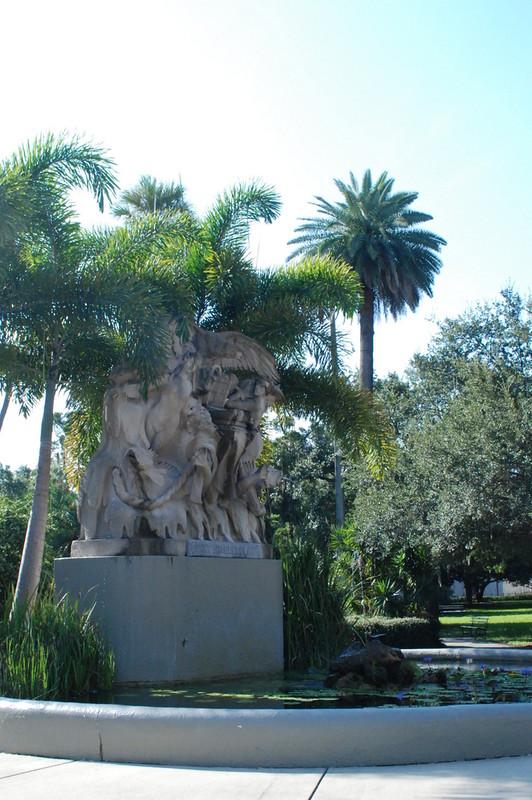
Removed from Unnamed collection
Henry B. Plant Museum 
The Henry B. Plant Museum is housed in the 1891 Tampa Bay Hotel, the Victorian railroad resort that defined the elegant frontier, now a National Historic Landmark. Unlike most museums dedicated to lifestyles of the past, it contains the actual furnishings enjoyed by the first guests to visit here. The Museum accurately reflects the opulence of turn-of-the-century America and the vision of American transportation pioneer, Henry B. Plant.
The Museum seeks to transport the visitor through educational exhibits and events to the late Victorian period, the beginning of Florida’s tourist industry, and the early years of the city of Tampa. http://www.plantmuseum.com/
Map

Removed from Unnamed collection
The Straz Center for the Performing Arts 
The Straz Center for the Performing Arts provides world-class entertainment, ranging from lavish Broadway shows to classical music and rock concerts. It is the largest facility of its kind in the Southeastern United States. http://www.strazcenter.org/
Map

Removed from Unnamed collection
Central Florida Community Arts 
Central Florida Community Arts (CFCarts) is a "one stop shop" for your entertainment needs in the Central Florida area. A non-profit 501(c)(3) organization, CFCArts includes: A top-notch pro-level vocal ensemble called Legacy http://www.visitorlando.com/EN-GL/things-to-do/arts-culture-and-history/Central-Florida-Community-Arts/37620/
Map

Removed from Unnamed collection
The Mennello Museum of American Art 
Owned and operated by the City of Orlando, The Mennello Museum of American Art was established in 1998 to preserve, exhibit, and interpret our outstanding permanent collection of paintings by Earl Cunningham. The Mennello Museum of American Art strives to enrich the public through renowned temporary exhibitions, exciting programs, educational initiatives, and publications that celebrate outstanding traditional and contemporary American art and artists across a broad range of disciplines. https://www.visitorlando.com/EN-GL/things-to-do/arts-culture-and-history/The-Mennello-Museum-of-American-Art/31389/
Map
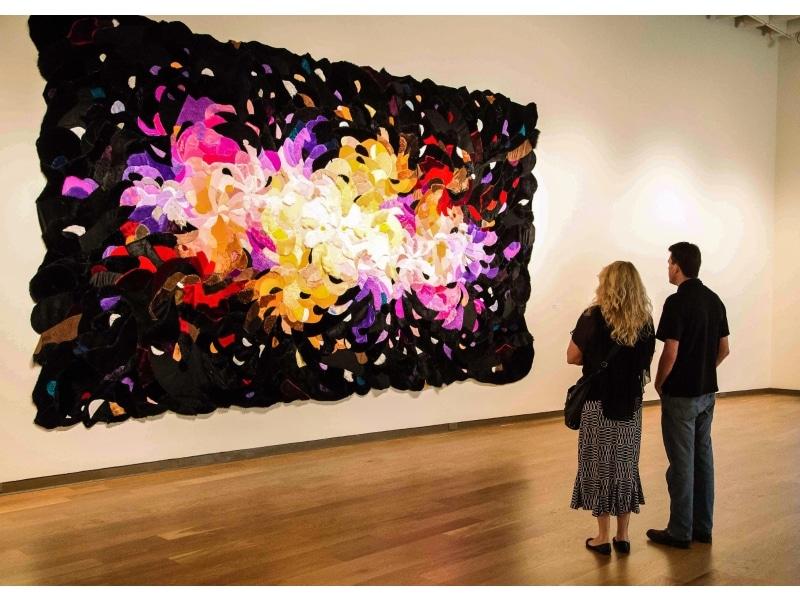
Removed from Unnamed collection
Orlando Museum of Art 
Founded in 1924, the Orlando Museum of Art is a a 501(c)(3) institution and leading cultural institution in the region. Their mission is to inspire creativity, passion and intellectual curiosity by connecting people with art and new ideas. http://www.visitorlando.com/EN-GL/things-to-do/arts-culture-and-history/Orlando-Museum-of-Art/31259/
Map
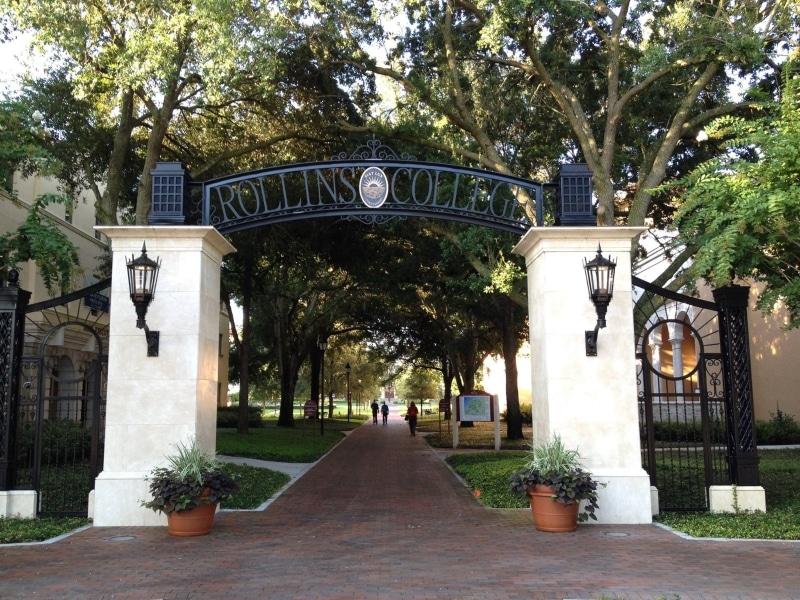
Removed from Unnamed collection
Cornell Fine Arts Museum 
If you love art The Cornell Fine Arts Museum, located on the campus of Rollins College in Winter Park, is a must-see during your Orlando visit. An ancient sarcophagus, Renaissance and Baroque paintings, American abstraction, modern sculpture and 21st century art all are part of our collection. Temporary exhibitions exploring timely and thought-provoking topics rotate seasonally. In addition to works at the Museum, you can explore art from the Museum's collection nearby at the College's philanthropic boutique hotel, The Alfond Inn. The Inn is a one-of-its-kind in the nation, serving as a satellite location for an art museum. https://www.visitorlando.com/EN-GL/things-to-do/arts-culture-and-history/Cornell-Fine-Arts-Museum/30993/
Map

Removed from Unnamed collection
Morro Castle 
Castillo de los Tres Santos Reyes del Morro (Morro Castle) was erected between 1589 and 1630 to protect the mouth of the Havana port from pirates and invaders. The fortress stands on a rocky promontory known as El Morro, over the Atlantic. It was the King of Spain who ordered the castle to be built and appointed Juan de Texeda, a field commander, and Batista Antonelli, a military architect, to lead the works. The castle was originally planned to have an irregular polygonal shape, with three-meter-thick walls and deep moats.
The castle is an perfect example of renaissance military architecture, and is endowed with an harmonic elegance that melds with its natural surroundings through a series of terraces fused to the rock.
Nowadays, the castle offers impressive views of the sea and Havana. The lighthouse that crowns its tower was added in 1844 and helps guide ships docking in the port. https://www.tripcuba.org/morro-castle-havana
Map
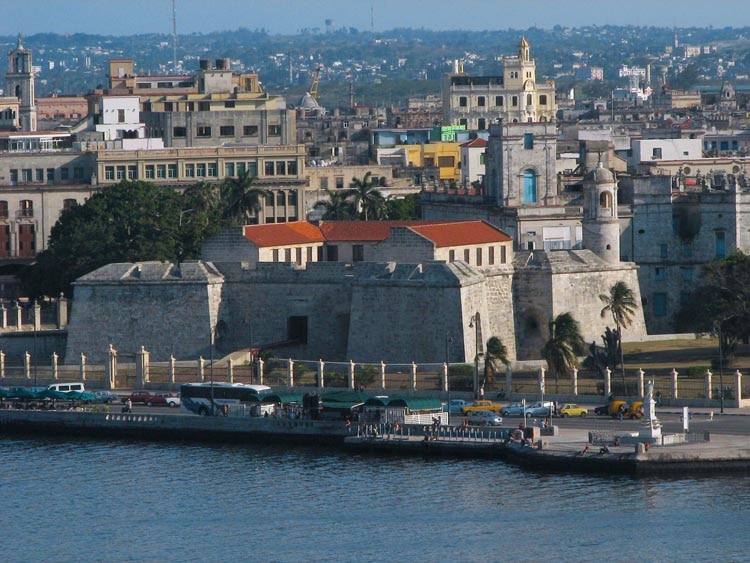
Removed from Unnamed collection
Castillo de la Real Fuerza 
Castillo de la Real Fuerza Castle in Old Havana, Cuba, one of Cuba’s most ancient castles. It is a great sample of military architecture during the Spain's rule over the Caribbean. It is located in the Plaza de Armas Square in Old Havana facing the sea. The Castle, as well as the rest of the old city’s fortifications, has been declared World Heritage Site by UNESCO.
The Castillo de la Real Fuerza Castle is the oldest fortress still preserved in all the Americas. It was built between 1558 and 1577, in the same location where a fort was destroyed by French pirates in 1555. The west tower is crowned by the copy of a well-known bronze weathervane called La Giraldilla. The original was made in Havana in 1630 and is quite similar to the Giralda of Seville. https://www.tripcuba.org/castillo-de-la-real-fuerza
Map

Removed from Unnamed collection
Rum Museum 
Discover the Rum Museum in Old Havana, Cuba, to learn more about and taste famous beverage!
The Havana Club Rum Museum ( Museo del Ron ) is located next to the Colonial Plaza de San Francisco de Asis Square , right in front of Havana harbor.
It is not necessary to drink alcohol to enjoy this wonderful museum , because by visiting it you'll still be able to delve into Cuban culture. This museum offers an interesting guided tou r exhibiting the complex rum-making process in old machines . This tour is available in Spanish, English, French, German and Italian. It explains the entire process, from the manufacturing white oak barrels to the rum's fermentation and ageing process, as well as a scale-model copy of a sugar mill. https://www.tripcuba.org/rum-museum-of-havana
Map
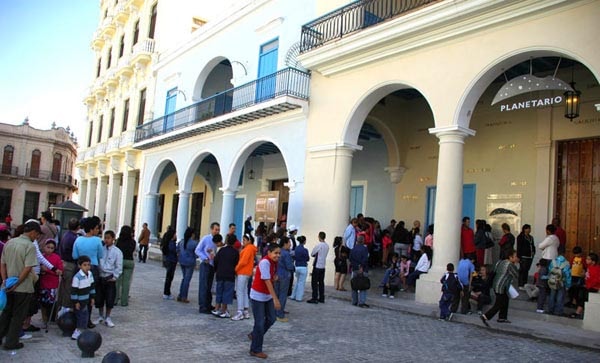
Removed from Unnamed collection
Planetarium of Havana 
Discover the Planetarium of Havana in Cuba and let it take you on a journey through time and space!
The Planetario de La Habana (Planetarium of Havana) is a must-visit place in Cuba. It was built in 2009 with the help of the Japanese government and is located in Calle Mercaderes, near the Plaza Vieja Square in Havana.
The Planetarium has exhibitions including a scale model of the Solar System inside a huge sphere, a Big Bang simulation, and a theater where it is possible to see more than 6,000 stars.
The Planetarium has several telescopes, a projector that can lock onto more than 6,500 stars, a library of astronomy, a theater, interactive games, and a staff made up of physicists and astronomers. https://www.tripcuba.org/planetarium-of-havana
Map
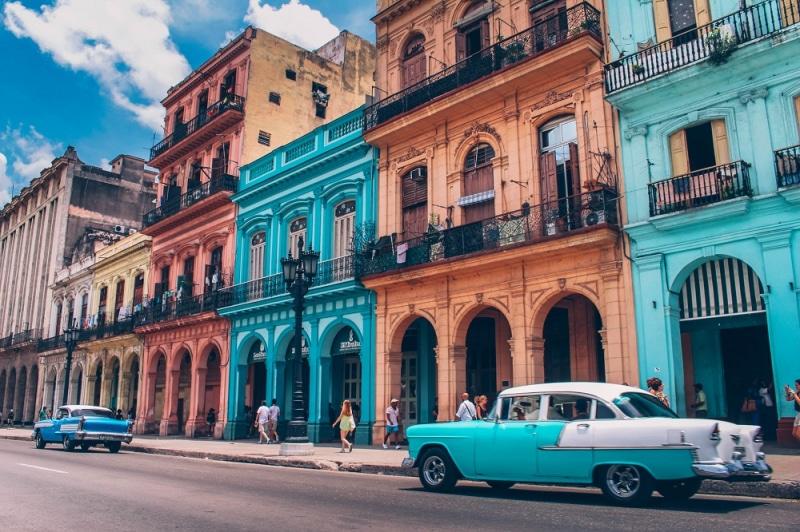
Removed from Unnamed collection
Old Havana 
Old Havana, located around the five main squares, and has one of the most impressive ensembles of historical architecture. From Baroque to Art Deco, from Neoclassicism to Art Nouveau, the rainbow-colored facades of the area adorn the diverse cultural heritage of Cuba.
Founded in the early 16th century on the southwest coast of Cuba by Spanish conquistador Pánfilo de Narváez, Havana moved twice before taking permanent establishment on the Caribbean island’s northwest coast.
Strategically chosen for its location in the Gulf of Mexico, Havana became a mandatory stop for ships traveling to and from the New World, and quickly became the largest port in the Spanish West Indies. Today, the city still claims some of the oldest stone fortifications in the Americas, and Old Havana, or Habana Vieja, claims some of the most beautiful architecture. https://www.nationalgeographic.com/travel/destinations/north-america/cuba/havana/old-havana-world-heritage-site/
Map
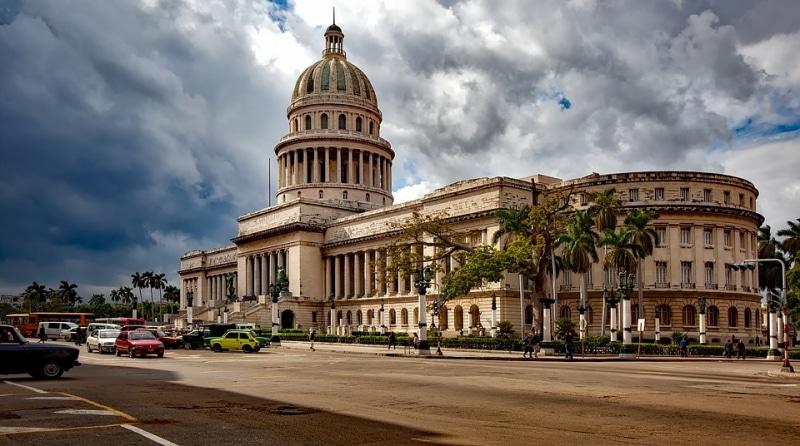
Removed from Unnamed collection
El Capitolio 
El Capitolio, or the National Capitol Building is one of the most visited sites in Havana. This majestic construction, located in the Centro Habana, is similar to that in Washington D.C, but a meter higher, a meter wider, and a meter longer, as well as much more rich in detail. It was started to be built by Gerardo Machado in 1926 supported by North America.
Formerly, it was used as headquarters of the Cuban Congress, but since 1959 it has hosted the Cuban Academy of Sciences and the Science and Technology National Library. The entrance is sheltered by 6 huge Doric columns, on top of a 55 steps granite staircase. In both sides on top of the stairs there are two amazing sculptures in bronze, a masculine and a feminine one, both 6,70 meters high, by the Italian Angelo Zanelli. When you cross them you’ll arrive to the Hall of Lost Steps, named in this way due to its wonderful acoustics, and in which center is the Republic statue, a huge woman in bronze 14,60 meters high and more than 30 tons weight, representing the virtue of the nation and work. https://www.tripcuba.org/el-capitolio-havana
Map

Removed from Unnamed collection
Malecon 
The Malecón, first named Avenida del Golfo, is Cuba’s most famous sea-side avenue. The project was undertaken by Don Francisco de Albear, Cuba’s greatest engineer at the time. Albear came up with a complex but smart design for the seawall, which was to be a lot more than just a promenade. According to historical records, the avenue was supposed to be constructed 4 meters above sea level. The whole project would cost 850,000 pesos, but the Spanish government didn’t bring itself to issue the construction permit and Albear’s proposal was postponed.
The construction of the Malecón began in 1901. After the first stretch was completed, for which several public facilities were demolished, construction works were resumed in 1921, and again in the 30’s.The architectural richness of the Malecón is also expressed through 18th- and 19th-century stately homes, followed by a row of 20th-century buildings with an unusual combination of styles and profusion of portals, columns and pilasters that loosely follow classical lines.
But beyond the architectural values of the buildings, its greatest charm lies in being somewhere to stroll or hang out on a stiflingly hot day. It is a place where couples come to make amends, especially at sunset, in the company of children and fishermen. It is Havana’s outdoor lounge. http://www.lahabana.com/guide/the-malecon/
Map
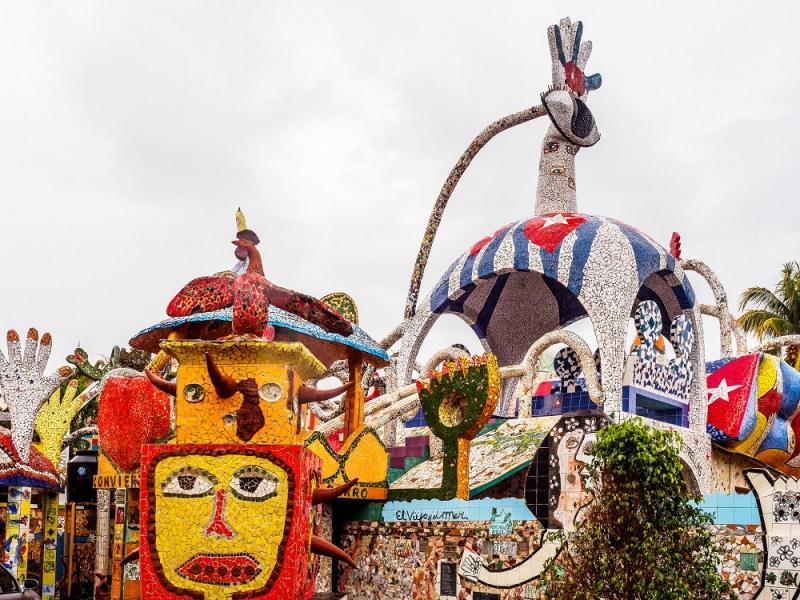
Removed from Unnamed collection
Fusterlandia 
Known for "naive" and "childlike" style, Cuban artist José Fuster created colorful, dream-like houses covered entirely with ceramic tiles.
Go back in the history, after successful gallery tours across Europe, Fuster was struck with a desire to recreate something like Gaudi’s public works in Barcelona and Brâncuși’s across Romania in his own homeland. He wanted to put his artistic reality into his real-world surroundings, and he began in his own neighborhood. In 1975, after moving into a modest wood house in the rundown neighborhood of Jaimanitas outside Havana, Fuster set about decorating his studio in colorful mosaic. Once he was done there, he asked his neighbors if he could decorate their homes and business as well. A few accepted his offer and the tile creations grew. Over the course of a decade, doctors’ offices, bus stops, fountains, benches, gateways, and more were enveloped by Fuster’s whimsical imagination. Today, his artwork coats the neighborhood in a rainbow of strange, enchanting fantasy.
Jaimanitas was an economically depressed area before Fuster arrived, and now it has turned into an artist’s paradise. Tourists are bussed into the neighborhood to admire Fuster’s still-growing kingdom, which has spawned a new generation of artists inspired by the surroundings they came up in. https://www.atlasobscura.com/places/fusterlandia
Map
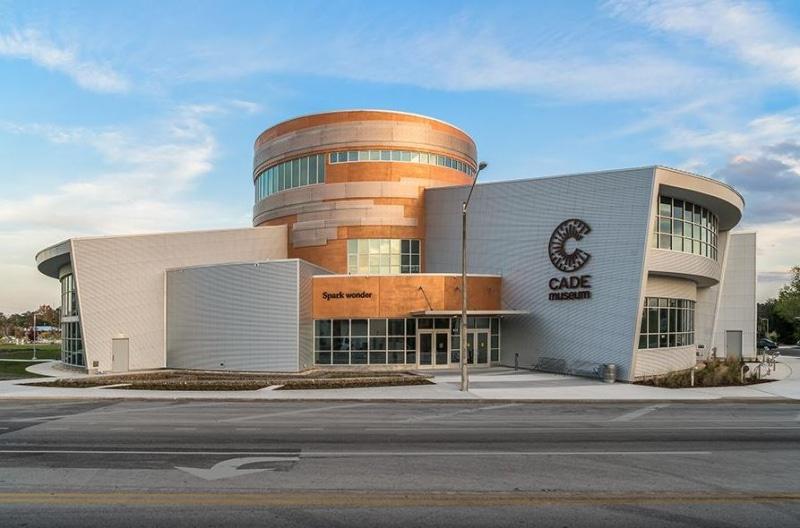
Removed from Unnamed collection
Cade Museum for Creativity & Invention 
The Cade Museum for Creativity & Invention, located at 811 South Main Street, is a museum of ideas. The question is not what you will see but what will you imagine and create.
Dr. James Robert Cade, a kidney specialist at the University of Florida, was best known as the leader of the research team that invented Gatorade in 1965. In 2004, Dr. Cade and his family established The Cade Museum Foundation in an effort to design and build a 26,000 square foot museum in Gainesville, Florida.
The mission of the museum is to transform communities by inspiring and equipping future inventors, entrepreneurs, and visionaries.
The Cade Museum for Creativity & Invention offers interactive activities in the Creativity and Fab Labs, hands-on learning in the rotunda, Studebaker Sundays, outdoor educational activities, travelling exhibits, and much, much, more. Cade programming and events are designed to engage guests in “purposeful creativity,” the kind that leads to great inventions, new businesses, and ideas that change the world https://www.visitgainesville.com/explore/attraction/cade-museum-for-creativity-invention/
Map
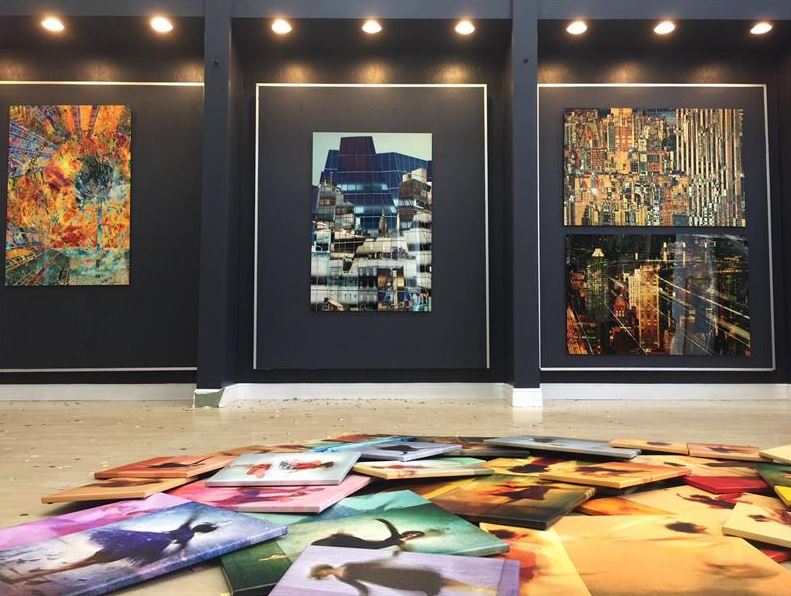
Removed from Unnamed collection
Black C Art Gallery 
Black C Art is a gallery and performance space featuring the work of dancer, photographer, and visual artist Ani Collier. Ani grew up in Bulgaria and studied ballet behind the Iron Curtain. She arrived in the United States a few months after the Wall came down, and performed on stage for many years. Photography and the visual arts came to capture Ani’s interest after many years of dancing professionally. While ballet remains her first love, Ani also likes to dance with her pictures. As ballet offers ethereal moments in time, so does Ani’s photography and digital collages. https://www.visitgainesville.com/explore/attraction/black-c-art-gallery/
Map
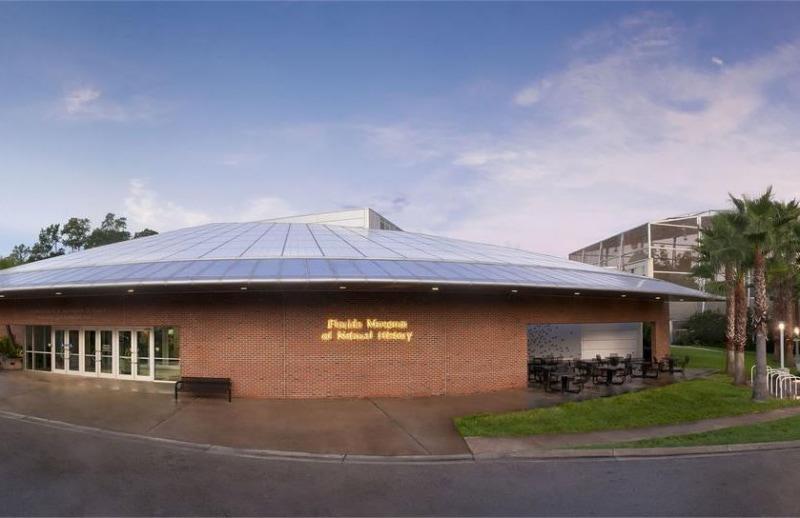
Removed from Unnamed collection
Florida Museum of Natural History 
Florida Museum visitors can enjoy hundreds of live butterflies from around the world in the Butterfly Rainforest exhibit, and explore the state’s unique habitats, as well as its natural and cultural history, in other permanent exhibits. Changing temporary exhibits cover a wide range of topics.
Florida’s official natural history museum is located on the University of Florida campus. The Florida Museum of Natural History houses more than 40 million specimens and cultural artefacts, including one of the world’s largest collections of butterflies and moths. The Museum’s mission combines research, preservation and interpretation of both biological diversity and cultural heritage. The main attractions are the permanent exhibitions that explore Florida’s unique habitats and cultural history and the exciting temporary exhibits. https://www.visitgainesville.com/explore/attraction/florida-museum-of-natural-history/
Map

Removed from Unnamed collection
Butterfly Rainforest 
Ask people about the one place to visit when coming to Gainesville, and many will say the Butterfly Rainforest.
At the Florida Museum of Natural History’s Butterfly Rainforest exhibit, you’ll come face-to-face with exotic free-flying butterflies within a large screened enclosure. Visitors can stroll through tropical foliage and flowers to the sound of waterfalls. More than 50 species from all over the world reside here at any given time.
The Wall of Wings exhibit inside the museum showcases thousands of preserved and photographed butterfly and moth specimens. Visitors can get a close-up view of scientists working in the world’s largest butterfly research facility. The butterflies in the exhibit become active when temperatures are 60 degrees or higher. https://www.visitgainesville.com/explore/attraction/butterfly-rainforest/
Map
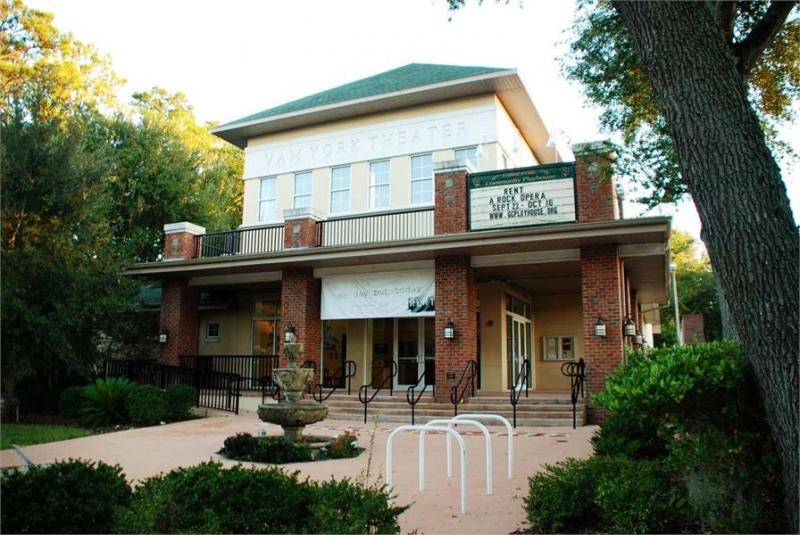
Removed from Unnamed collection
Gainesville Community Playhouse 
The Gainesville Community Playhouse is one of the oldest community theatre in the state of Florida. Its first play, The Pied Piper of Hamlin, was produced in 1927 and have been producing quality plays and musicals ever since. In 2006, Gainesville Community Playhouse moved into our present facility, the magnificent Vam York Theater, a 210-seat house with facilities to stage the most demanding musicals and plays. http://www.visitgainesville.com/attractions/gainesville-community-playhouse/
Map
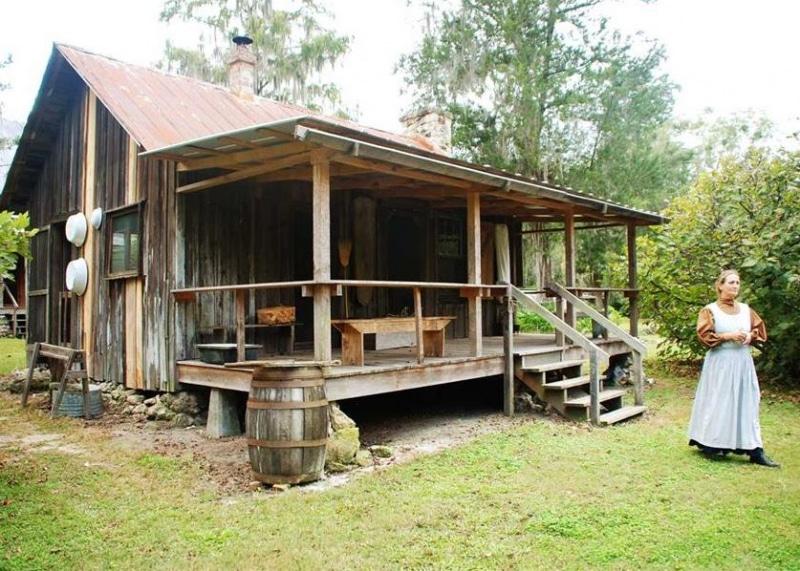
Removed from Unnamed collection
Dudley Farm Historic State Park 
At Dudley Farm, a one-of-a-kind authentic 325-acre working “Cracker” farm, you will see the evolution of North Florida farming through the eyes of three generations of the Dudley family; from the pioneer days circa 1850 through the introduction of gasoline-powered equipment circa 1945.
Dudley Farm Historic State Park is listed on the National Register of Historic Places. Some highlights include a visitor center, park staff in period clothing performing chores, production and harvest of heritage crop varieties and sugar cane, raising of heritage livestock varieties including Cracker cows and Barred Rock chickens, family farmhouse with original furnishings, general store and post office, 1880s kitchen outbuilding, cane syrup complex with autumn cane grinding, boiling, bottling, seasonal corn shucking, nature trail and picnic area. https://www.visitgainesville.com/explore/attraction/dudley-farm-historic-state-park/
Map

Removed from Unnamed collection
St. Andrews Anglican Church 
With all the rich history that’s been written in the Exumas, it’s surprising how few historical sights there are to see in its capital, Georgetown. Like Green Turtle Cay in the Abacos, the Exumas were settled by Loyalists, former American colonists who stayed true to the British Crown in the wake of the Revolutionary War. https://www.uncommoncaribbean.com/2012/09/20/on-site-great-exuma-st-andrews-anglican-church/
Map
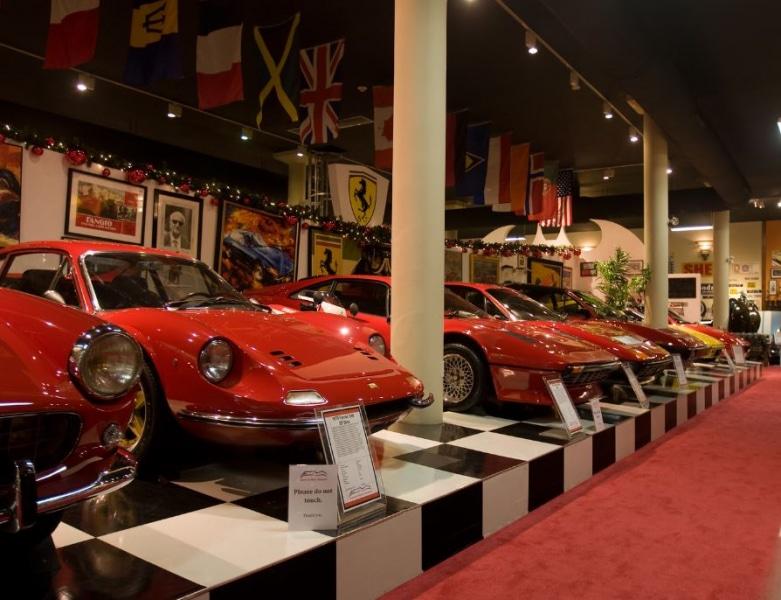
Removed from Unnamed collection
Cayman Motor Museum 
The Cayman Motor Museum is the realization of a vision by businessman Andreas Ugland to have a local showroom to share his collection of exotic, rare, and classic motorcars and motorbikes.
The Cayman Motor Museum features the first car ever brought to the Cayman Islands: a 1905 Cadillac brought in from Havana Cuba in 1914. Among Ferraris, Rally Cars, Porsches, and Bentleys there are also motorbikes, power race boats, plenty of artwork and motor memorabilia. http://caymanmotormuseum.com/index.php/pages/about-us/
Map
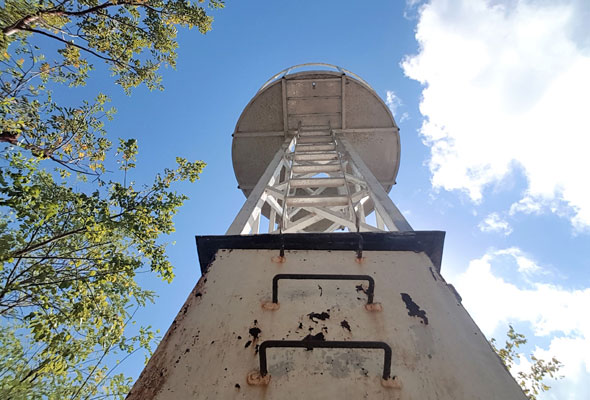
Removed from Unnamed collection
East End Lighthouse Park 
The first lighthouse on Grand Cayman was erected at Gun Bluff in the early 1900s, which is approximately a half-mile from the present site of the East End Lighthouse Park. This was required under the Justices and Vestry’s East End Light Law (1906). A 60-foot ship’s mast stood on the Bluff and William James Watler was hired as a lightkeeper to ensure that a kerosene lantern was hoisted to the top of the mast at 6:00pm every evening and lowered at 6:00am every morning. A fine “not exceeding forty shillings” was to be imposed on him if it was discovered that he had been lax in his duties. The light could be seen 10 miles out to sea.
The lighthouse at Gorling Bluff served until 1937, when the British Government gave order for five modern “navigational lights” to be erected around the coasts of all three Cayman Islands. The lights were to be placed on Crown Property, however, so that same year the Crown acquired Gorling Bluff. The replacement lighthouse was constructed by Mr. Morell from England, and it is this light which serves to the present day, though it is now solar-powered. Part of the wooden frame of the previous lighthouse remains, but the old kerosene lamp is now in the Cayman Islands National Museum. https://nationaltrust.org.ky/our-work/historic/east-end-lighthouse-park/
Map
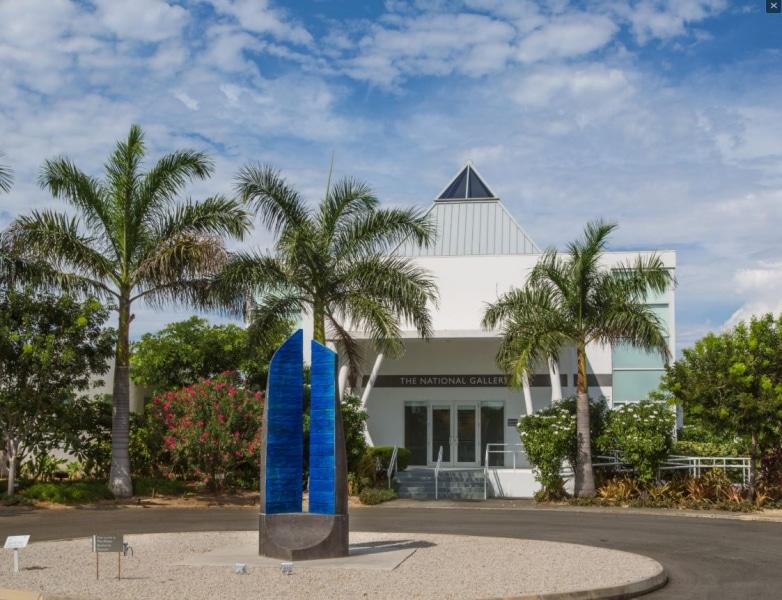
Removed from Unnamed collection
The National Gallery of the Cayman Islands 
A contemporary museum showcasing local artwork & traditional crafts, plus lectures & special events. Visitors can explore a spectacular collection of art that illustrates the essence of Caymanian life here at the National Gallery. https://www.nationalgallery.org.ky/see/
Map
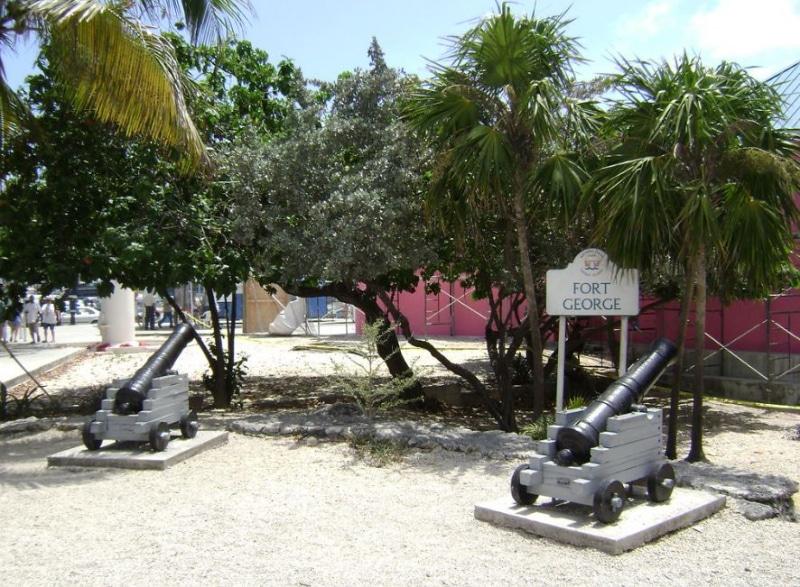
Removed from Unnamed collection
Ft. George Ruins 
In the past, Fort George used to defend Grand Cayman from attacks by Spanish marauders from Cuba; though piracy on the high seas was over by this time, there was still frequent lawless activity.
The fort was also used as a coastal lookout for enemy ships as recently as World War II. Despite its small size, Grand Cayman was said to have had both German and British spies present during World War II, and a US Naval base was set up in the area behind the George Town Public Library. Caymanians did much to aid the allied efforts and several also enlisted in Trinidad to support the British during the war. https://nationaltrust.org.ky/our-work/historic/fort-george/
Map

Removed from Unnamed collection
Cayman Islands National Museum 
Located in George Town and housed inside the oldest public building in the Cayman Islands, this museum showcases both the natural and cultural history of the islands through dynamic programmes, exhibits, and displays. https://www.museum.ky/
Map
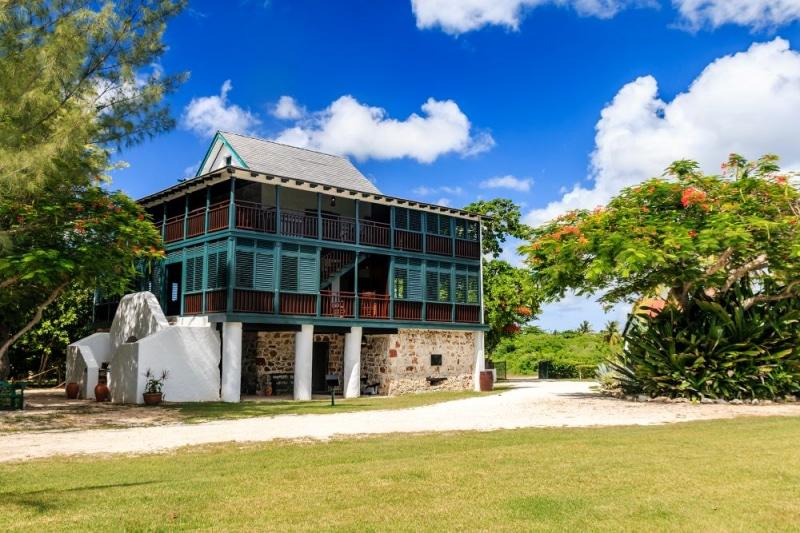
Removed from Unnamed collection
Pedro St. James 
Discover the unique heritage and culture of Cayman via this lovingly restored window into the 18th century that’s only a 20-minute drive from George Town.
At a time in the Cayman Islands when most people lived in tiny, thatch-covered houses, a wealthy Englishman, using slave labour from Jamaica, created an astonishing 3-storey building called Pedro St. James.
In the 1990s, the Government of the Cayman Islands purchased Pedro St. James and painstakingly restored the Great House to the splendour of its 18th-century heritage.
Today, visitors can stroll through the imposing edifice with its period furniture and authentic artefacts to experience what life was like so long ago in Cayman’s history. https://pedrostjames.ky/?doing_wp_cron=1596783793.3607161045074462890625
Map




